SUMMARY
This is AI generated summarization, which may have errors. For context, always refer to the full article.
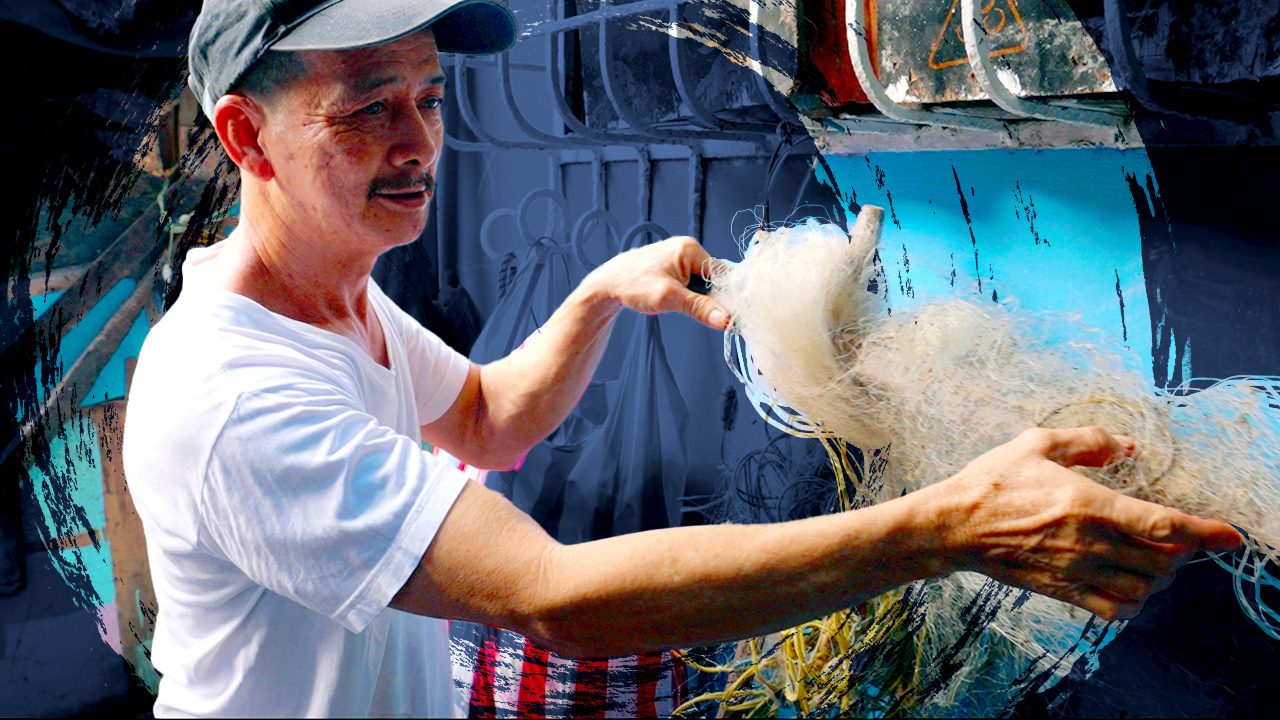
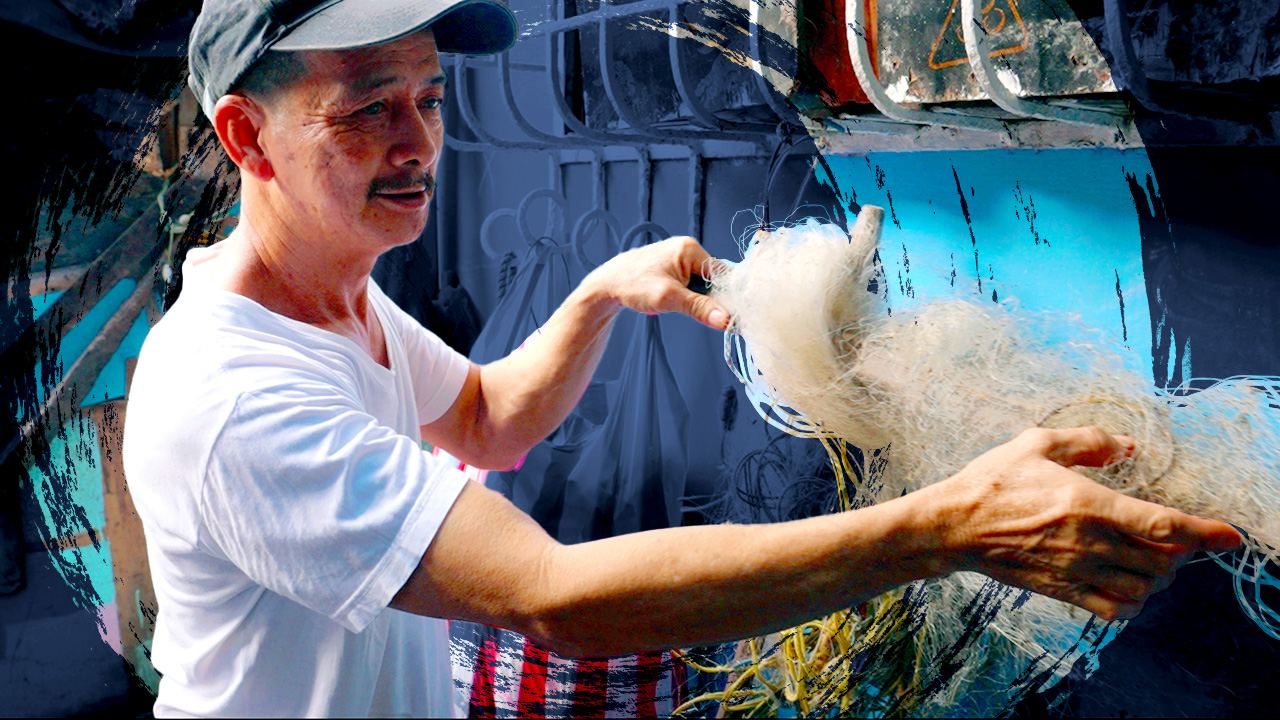
Big fishers encroach on small fisherfolk’s municipal waters
Small fisherfolk have preferential rights in municipal waters under the law. But a recent court victory by a big operator is threatening to change the game.
PUBLISHED APRIL 6, 2024 9:30 AM PHT
BY Lian Buan, Iya Gozum
READ: Part 1 | Top officials with private interests spoil effort to track big fishers
Municipal fisherfolk remain among the poorest Filipinos, earning only an average of P363 (US$6.45)* a day, and the possibility of losing preferential access to their fishing grounds poses an added threat to their existence.
After three commercial fishing operators successfully evaded the state requirement for a tracking system, the next battleground for them is obtaining the right to fish inside municipal waters or the rich fishing grounds within 15 kilometers from the shore.
The Fisheries Code gives small fisherfolk preferential rights to this area. But a big fishing operator partly owned by the family of former National Telecommunications Commission (NTC) chief Gamaliel Cordoba won a court case contesting the provision, and gained the rights to this fishing ground.
Malabon Regional Trial Court Judge Zaldy Docena, who also favored the three commercial fishers in the tracking system case, ruled in December 2023 to allow Mercidar Fishing Corporation to operate within the 15-kilometer municipal waters.
Mercidar Fishing Corporation, Rappler has confirmed, is partly owned by Monica Elena Cordoba, the wife of Cordoba, former NTC chief and now Commission on Audit (COA) chair appointed by President Ferdinand Marcos Jr. in October 2022. Under Cordoba, the NTC did not issue service identity numbers needed for the Vessel Monitoring System (VMS), a tracking system that commercial fishers are resisting.
“Mercidar Fishing Corporation [may] be allowed to operate on all territorial waters in the Philippines without regard to the 15 kilometer limit,” said Docena on December 11, 2023.
Rappler sought Mercidar’s comment via email and text message but we have yet to receive a response. We will update this story once we get a reply.
The tracking system and the 15-kilometer cases were not the first time that Docena favored commercial fishers. In 2014, Docena also stopped the implementation of a fisheries ordinance that bans the use of the destructive hulbot-hulbot gear. But he was reversed by the Supreme Court later on.
Docena was sanctioned by the Supreme Court at least two more times for other cases, both with suspension as penalties. One of the suspensions had to do with irregular issuances of search warrants.
Asked if he could comment on the impression that his rulings had consistently favored big fishers, Docena told Rappler through a family relative, “I am just interpreting the existing law to the best of my ability. Whether I agree with the law or not, or what I think of their consequences – these are questions that I am duty bound to exclude from my interpretation.”
The judge, who retired just after the Mercidar win, denied personally knowing the involved fishing families in the court cases.
Rappler’s three-month investigation into government records and interviews with fisherfolk, advocates and bureaucrats, show commercial fishers being favored by the court and some regulators. The battle for the 15-kilometer zone now makes small fisherfolk worry that an impending amendment of the law, a priority of Marcos, could favor commercial fishers again.
15-kilometer battle
In a vast ocean of depleting marine resources, it is in shallow waters where sunlight can penetrate and a number of fish and marine resources thrive. Given preferential use under the Constitution, small fishers find livelihood in the 15-kilometer zone, their refuge from unequal competition against big fishers who have the technology like fish finders and echosounders.
When Docena gave Mercidar the right to fish within the 15-kilometer zone, the judge included a caveat: commercial fishers can operate within 15 kilometers, but they cannot fish in shallow areas. The decision said commercial fishers can only operate within the zone if the waters are at least seven fathoms (equivalent to 12.8 meters) deep.
Shallow waters or those less than seven fathoms deep are roughly only 10% of municipal waters, marine scientist Rene Abesamis said, citing an initial analysis done by a colleague. It means 90% of the municipal waters are already fair game for commercial fishers.

If Docena’s ruling will be taken as precedent in the amendment of the Fisheries Code, small fishers will be left with next to nothing, and big fishers will have virtual monopoly over almost all of Philippine waters.
Removing the 15-kilometer boundary and simply following the seven fathoms measurement present a “technically demanding” job for the National Mapping and Resource Information Authority (Namria), said Abesamis, because they would have to “do an analysis where they would outline the depth contour of the seven fathoms.”
Namria would have to map this for the entire country’s coastline, all 36,289 kilometers, the fifth longest coastline in the world. Currently, only 311 coastal municipalities (out of 822) have certified municipal water boundaries, according to Aaron Andro Ching of Namria.
Any way the wind blows, the Malabon ruling only legalizes what has long been accepted practice at sea. There had been reports in the past of commercial fishers encroaching on municipal waters.
“They have defeated the law, actually,” said biologist Wilfredo Campos, a member of the National Science Advisory Group (NSAG) which had been advocating ever since to keep commercial fishers out of the 15-kilometer zone.
In 2023, online platform Karagatan Patrol detected 28,822 commercial fishing vessels operating inside municipal waters through the Visible Infrared Imaging Radiometer Suite (VIIRS), a sensor on board a weather satellite operated by the United States National Oceanic and Atmospheric Administration.
In 2019, the Philippines divided waters into fisheries management areas (FMA) in a bid to conserve and manage stocks. Karagatan Patrol’s data show that most of the commercial fishing vessels encroach on the municipal waters of FMAs 4 and 5 – FMA 4 covers Zamboanga Sibugay, Basilan, Sulu, Tawi-Tawi, Zamboanga del Norte, Negros Occidental, Iloilo and Negros Oriental; while FMA 5 covers Antique, Occidental Mindoro, and Palawan. FMAs 4 and 5 are major fishing grounds for sardines and galunggong, said Campos.

New frontier: depth instead of distance
In his State of the Nation Address (SONA) on July 24, 2023, Marcos said he would prioritize amending the Fisheries Code.
“Our Fisheries Code must be revised to incorporate and strengthen science-based analysis and determination of fishing areas. This approach will protect both the interests of our fisherfolk and our fisheries and aquatic resources,” said Marcos.
Four months after giving this marching order, Marcos finally vacated his interim post as Agriculture Secretary and appointed his campaign donor and fishing tycoon Francisco Tiu Laurel Jr. Before his appointment, Tiu Laurel served as president of family-run Frabelle Fishing Corporation. One of the immediate concerns then was the glaring conflict of interest, which the agriculture chief shrugged off.
In an ambush interview on April 3, the agriculture chief confirmed they are looking at changing the delineation of municipal waters by depth instead of distance.
At least from the draft he’s seen that came from the DA-BFAR, Tiu Laurel said “20 fathoms is what’s being contemplated.” 20 fathoms is around 37 meters.
This 20 fathoms proposal also came from commercial fishers, said Ruperto Aleroza, vice chair for basic sectors of the National Anti-Poverty Commission. “According to the technical person, NGO researchers whom we consulted, waters 20 fathoms deep are as close as within 5 kilometers from the shore, meaning the space will become smaller for municipal fisherfolk,” Aleroza told Rappler in Filipino.
Conservation groups worry that court rulings may no longer be necessary for commercial fishers to win this 15-kilometer battle. If they succeed in their lobbying, the amendment of the law may just reflect their wishes.
The pre-consultations seem to be engaging commercial fishers more, said Aleroza.
“What’s happening is that commercial fishers get to talk more [in these consultations], and BFAR – we’re also wondering – instead of playing their role to facilitate the opposing sectors, the impression is, whatever the version of commercial fishers is, that’s what they are facilitating,” Aleroza told Rappler in Filipino.
Aleroza said NAPC did its own consultations, which resulted in resolutions calling on Marcos “to firmly uphold the constitutionally-guaranteed preferential right of artisanal fishers over the 15-kilometer municipal fishing grounds.” They are waiting for a more comprehensive meeting with either Marcos or Tiu Laurel.
“If we want sustainability, we should protect critical habitats that produce aquatic resources like coral reefs. If you allow commercial fishing to enter, and studies have shown they destroy coral reefs, what future will we rely on?” said Aleroza in Filipino.
In 2019, the NSAG already told BFAR that more fishing activities in municipal waters would prevent fish species from respawning properly.
“[A]ny additional fishing, such as the proposed operations of commercial vessels in municipal waters, would contradict the solution to the problem of overfished scad and sardine stocks,” the NSAG told BFAR back then. But BFAR did not respond, according to Campos.
Mercidar argued in its complaint that the 15-kilometer is not only unconstitutional, it also does not hold any scientific basis. The story goes that when Marcos’ father, the dictator Ferdinand E. Marcos passed Presidential Decree No. 1015 in 1976, he banned commercial fishers from the seven-kilometer zone, and banned trawls in waters seven fathoms deep or less, only because he had a penchant for the number seven.
Abesamis, the marine scientist, said the question of whether the 15-kilometer boundary is scientific or not seems more of a distraction. The boundary is set to give an edge to small fishers, 31% of whom live below the poverty threshold.
“I read that as a social thing. Here’s where small players can fish,” Abesamis told Rappler. “That’s the spirit [of the law].”

Tokhang at sea
The resistance to VMS and the opening up of the 15-kilometer zone have caused the sea to shrink for the municipal fishers. Even the agriculture chief said that commercial fishers operating in municipal waters are within the purview of local government units. “That’s not under the DA,” he said in Filipino.
And this is exactly what’s happening at the local level. Small fishers are edged out further by local government ordinances that demarcate zones, resulting in arrests at sea.
In Navotas, which is covered by Docena’s court rulings for VMS and the 15-kilometer zone case, small fisherfolk are apprehended when they go outside the Navotas side of the sea.
Rogelio Guevarra, 57, from Navotas, was arrested in 2022 when he reached the waters of Cavite. He calls his apprehenders “maritime,” which refers to the Philippine National Police Maritime Group. Guevarra said they were initially told to follow them to shore to get the proper permits.
A source who was once part of the maritime’s advisory body told Rappler that it is made up of members of different stakeholders, including representatives from commercial fishing companies. This has been confirmed by Rappler through a current member of the advisory body.
But Guevarra, his son, and fisherfolk from two other boats, were taken instead to Parañaque. They were made to pose for mugshots, and fined P3,000 ($54) per boat when they were earning a maximum of only P2,000 ($36) a day.
“Nangutang lang ho kami noon,” Guevarra said, recalling having to leave his son at the detachment area to get bail money. “Kasi dito sa paligid namin, walang mahuling isda, kaya doon kami namamalakaya.” (We only borrowed money then. There were no fish to catch here in our area, that’s why we were fishing there.)
The fisherfolk were trapped: if they stayed in Navotas, there would be no catch. But if they fished elsewhere, they risked getting arrested.
After Guevarra was arrested, he stayed away from fishing whenever he could. Staying within their zone has been tough because, according to him, there have been fewer and fewer areas to fish ever since San Miguel Corporation (SMC) started building the New Manila International Airport in nearby Bulacan in 2020.
According to Guevarra, big waves drive fish to hide in underwater excavations used by the ships for the airport’s construction. But they cannot follow the fish to that area, citing incidents of drop-ins by individuals who simply tell them to stay out of the airport zone.
“Sa labas naman, mababaw, wala naman hong isda,” said Guevarra. “Kaya napipilitan kami, ‘pag dumadaan ‘yung barko, lumalayo kami. Pagka wala nang barko, saka kami umaarya.”
(Outside, the waters are shallow, there are no fish. We’re forced to hide further whenever the dredger passes. When it’s gone, that’s when we fish.)
We sent SMC emails requesting for comment on this story, but they have yet to respond. The intimidating presence of armed SMC personnel was earlier reported in the pre-construction consultations with the community, but the conglomerate told UK-based non-government organization Global Witness in 2023 that the personnel were there to “secure the area” and “prevent outsiders from causing disruption.”
BFAR, tasked to increase fisheries and aquaculture production within ecological limits, said it cannot intervene.
“We note that the management of the municipal waters belongs to local government units,” BFAR spokesperson Nazer Briguera told Rappler. “Hence, it is within the jurisdiction to enact and implement municipal ordinance which they deem necessary.”
From January to October 2023, the maritime police apprehended at least 66 fishermen from Navotas, according to figures from the Parañaque’s agricultural, fisheries, and aquatic services office. This is roughly half of the fisherfolk arrested at sea, the others hailing from Cavite and Malabon.
Implementing their local ordinance is a way to keep the best interests of their local fishers, said Amie Hernandez, officer-in-charge of the city’s agriculture office. The maritime police apprehend local fishers and the latter are taken to city hall to pay fines at the treasury office, Hernandez told Rappler.
Right now, Parañaque is revising Ordinance No. 06-02 released in 2005, Hernandez said, to increase penalties and add eight buoys to mark the delineation of their municipal waters.
Arrests based on zoning ordinances have long been a recurring issue across the country, according to Dennis Calvan of the conservation group Rare Philippines, and a member of the government’s fisheries advisory committee.
Municipalities exercise territorial rights within their zones, resulting in extreme measures such as arrests. It is a case of local governments wanting to exercise autonomy in all areas – even over waters that are hard to govern.
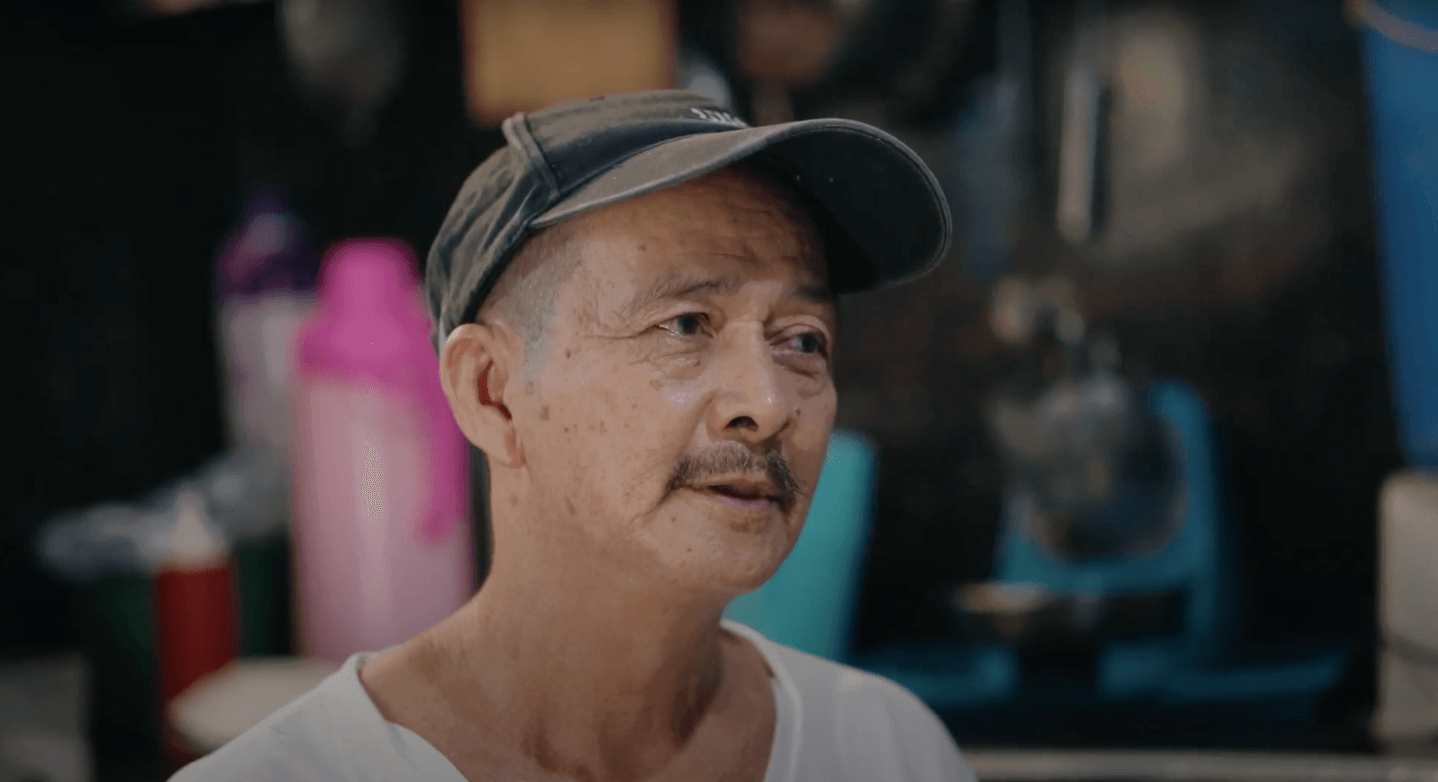
Nowhere to go
As fish stocks dwindle in their area and arrests abound, Guevarra said they mainly rely on baklad or fish corrals for their catch. These are stationary traps made of bamboo stakes and plastic nets that can capture fish.
Inside Guevarra’s house is a small booth where the family sells flavored shaved ice to augment their income. There are days when they would still sail to fish. It had been, after all, their way of life for generations. And they have mouths to feed.
“Kung nasaan ‘yung isda, talagang pinupuntahan namin, dahil ‘yun talaga ang buhay namin,” said Guevarra. “Kung pagbabawalan kami doon at wala kaming mapuntahang may isda, talagang mapipilitan kaming pumasok doon sa bawal na sinasabi nilang bawal.”
(Where the fish go, we go, because that’s our life. If we’re not allowed in some areas, but we can’t find another place with enough fish, then we don’t have a choice but to fish in those areas.)
Guevarra goes out to sea only to accompany his son. His neighbor, 73-year-old Celso Sebastian, has quit fishing altogether, the only job he has ever known in Navotas. The catch has exponentially decreased in recent years, and he decided that the threat of being arrested at sea was no longer worth the few fish he is able to take home.
“Ayaw ko na, hindi ko na kaya ang ganyan (I quit, I can no longer bear it),” Sebastian said. He has also already sold his boat.
Calvan called this a “desperate situation that could get even more desperate.” If not stopped, he said poverty incidence will increase and depletion of resources will continue.
“There will be no more preferential rights as guaranteed by the 1987 Constitution. It’s like we’re saying, [the waters] are free-for-all.” – Rappler.com
Disclosure: Oceana, a co-petitioner in the Supreme Court VMS case, is an advocacy partner of Rappler. The group was not used as a source for the story, however in the latter part of reporting, we referred to data from Karagatan Patrol, which is an initiative of Oceana.
$1 = P55.43
1 comment
How does this make you feel?
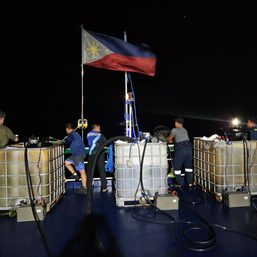
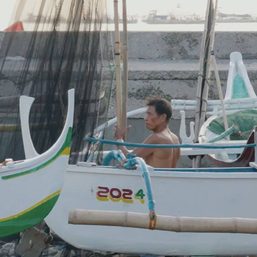
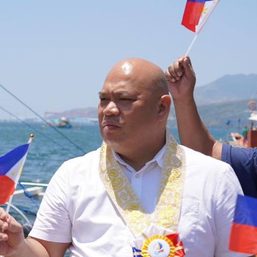
![[Rappler’s Best] The elusive big fish – and big fishers](https://www.rappler.com/tachyon/2024/04/The-elusive-big-fish-%E2%80%93-and-big-fishers.jpg?resize=257%2C257&crop=220px%2C0px%2C720px%2C720px)










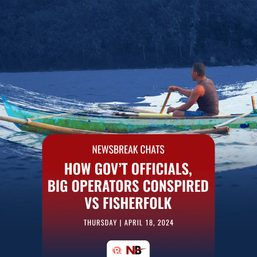
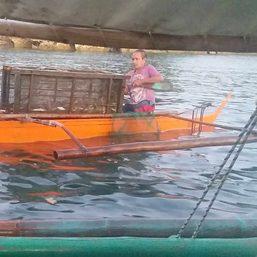
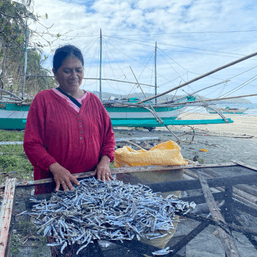




It looks like Goliath is winning. For David, the small fishermen had better plan how they would “quit fishing altogether, the only job (they have) ever known.” It is now just a matter of timing, and the soonest will be the best. They should be realistic and must not expect that Marcos Jr.’s Government will consider their welfare a greater priority than that of the commercial fishing corporations. NGOs that are working for them should help them in this exit out of the fishery industry sector.